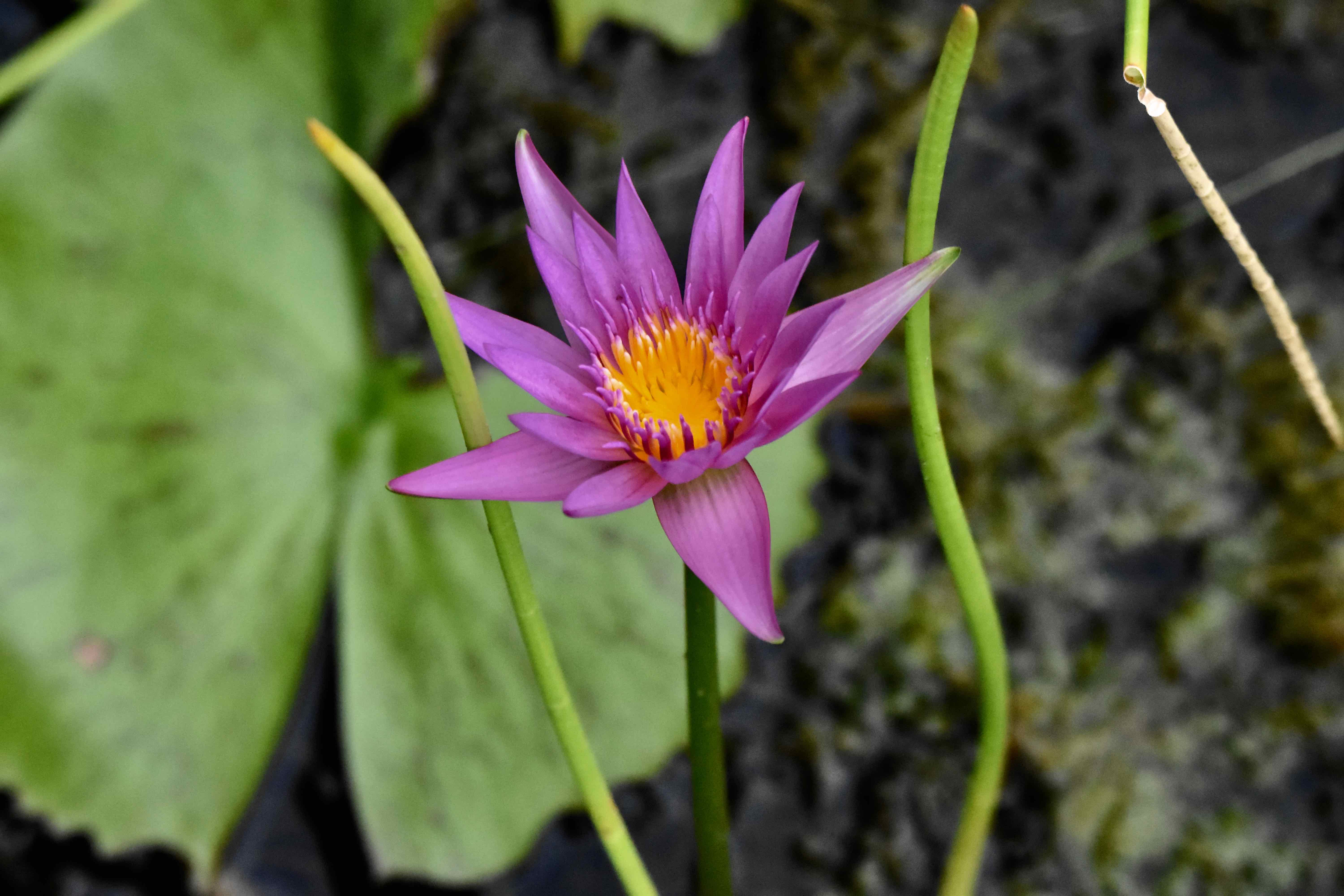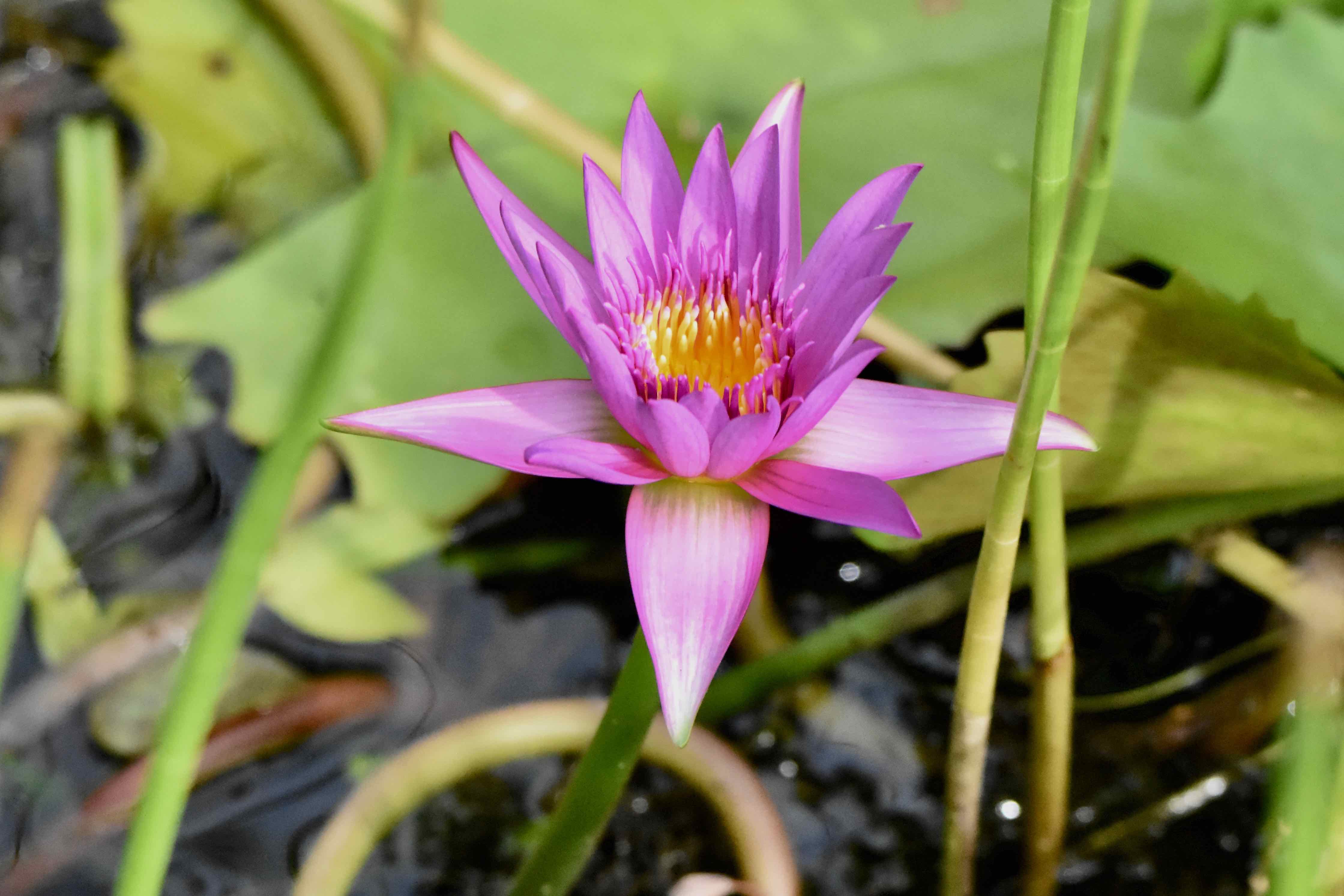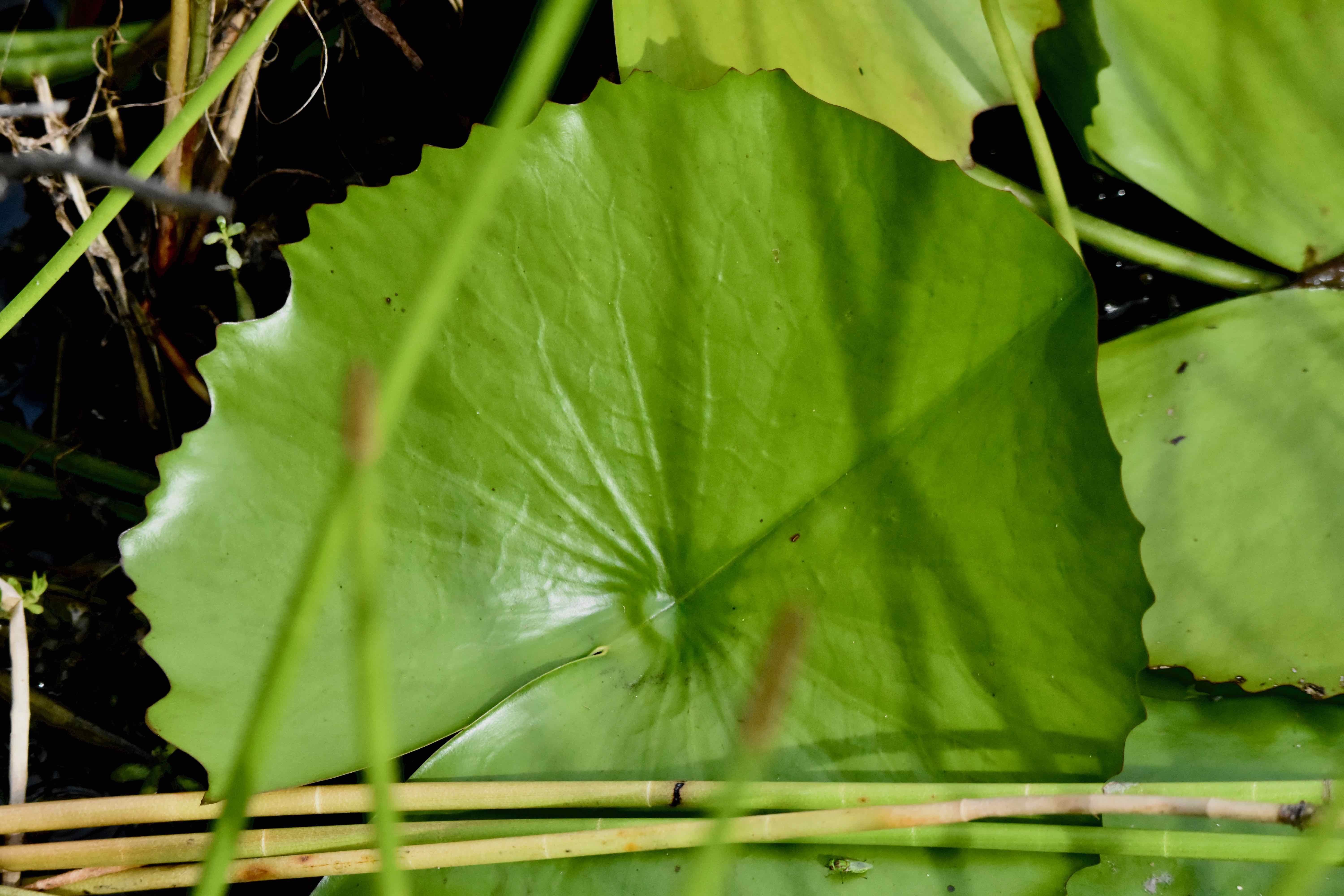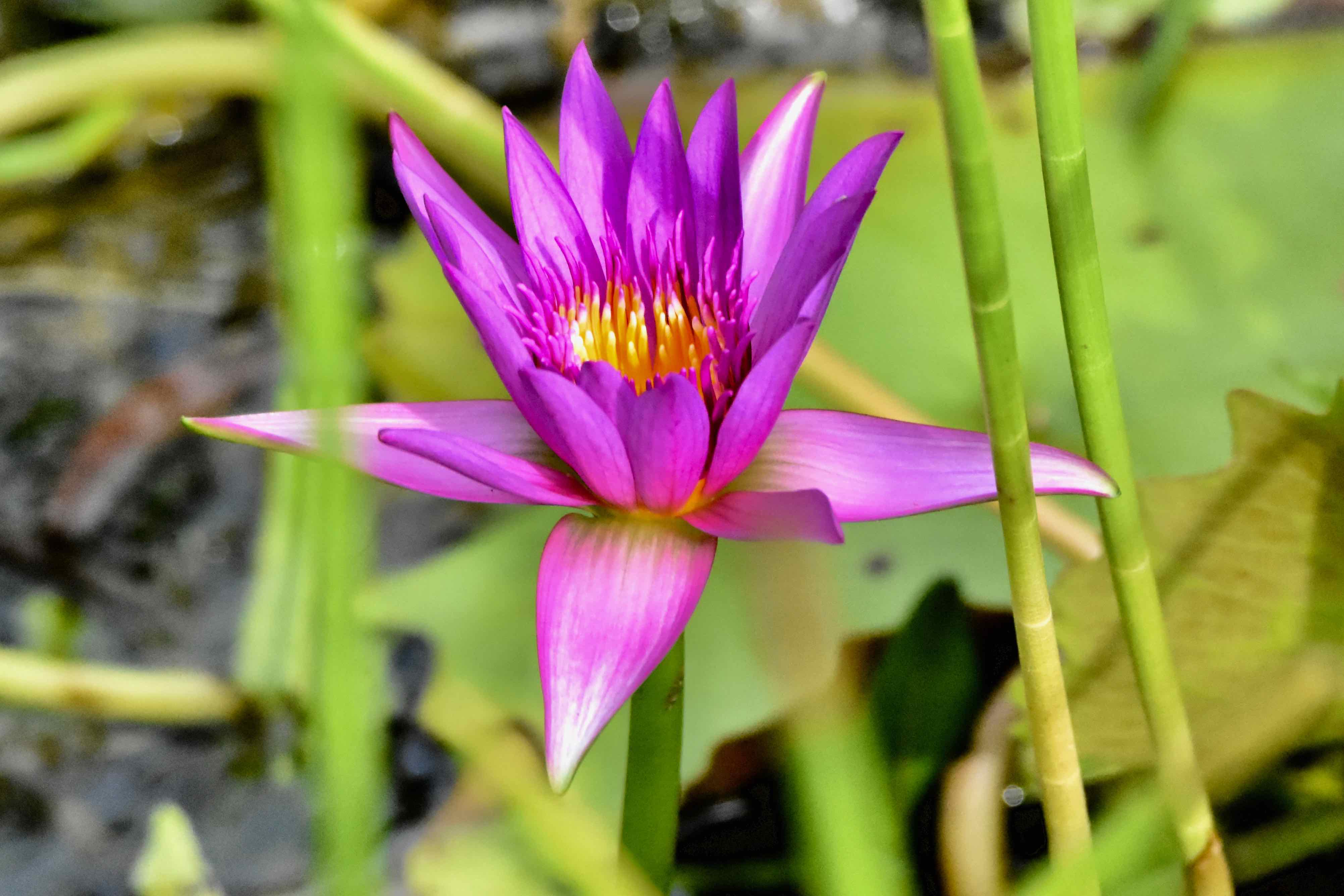
Cape blue waterlily, photographed at Jupiter Ridge Natural Area, Jupiter, Palm Beach County, in September 2018
The Cape blue waterlily, Nymphaea capensis, is so beautiful that you just want it to be a Florida native. Alas, it's not. Rather, it's an exotic from Africa probably brought here as an ornamental because of its extraordinary good looks.
It's been exported to Central America, South America, southern Asia and Australia, where it's become an environmental pest. Its beauty is such that in 1981, Nicaragua featured it on a postage stamp even through it's not native. Sri Lanka declared it to be its national flower, again even though it's not native to that country. Cape blue's natural range includes tropical Africa — parts of Egypt, Somalia, Kenya, Tanzania, South Africa, Namibia and Mozambique.
In Florida, it's found in nine counties from Escambia to Miami-Dade, according to the Atlas of Florida Vascular Plants. Some references call it an invasive in Florida, but it's not all that common. We found these plants growing in a depression marsh in Jupiter Ridge Natural Area; the Institute for Regional Conservation lists only one conservation area in South Florida where it might be found: Everglades National Park.
According to the Atlas, it's been in Florida for at least 62 years; the first verified specimen growing in the wild was found in Indian River County in 1957. The first verified specimen growing in South Florida was found in Palm Beach County in 1980. No agency has deemed it to be an invasive, the definition of which is a nonnative plant that is spreading to the point where it poses a threat to native species.
Cape blue's natural habitat includes rivers and other shallow, freshwater places. It has thick, tuberous rhizomes that anchor the plant in the muck and allows it to go dormant and endure dry periods, re-emerging when rains make conditions right again. (We revisited Jupiter Ridge in January during our dry season and there was no sign of the plants we photographed four months earlier as the depression marsh had dried up; we revisited the site in the fall of 2021 and cape blue was back, though it looked like it was getting ready for its annual winter nap.)
The flowers bloom in spring through summer, opening during the day, closing at night to reopen the following day. The petals vary widely in color, mostly blues, lavenders and purples, sometimes reds. The anthers take on the color of the petals; the stamen are bright yellow. Once the seeds mature, the flower head recesses back into the water.
The leaves, photo below, are roughly circular, with a slit that goes nearly to the center. The veins are prominent and radiate from the center; the surface is smooth, the edges are irregularly serrated, creating a scalloped look. It grow in full sun to part shade.
In the Australian states of Queensland and New South Wales, cape blue is considered an environmental weed because it chokes waterways and crowds out native plants. In the southern part of Queensland it's so widespread that it's actually the most common waterlily.
Cape blue has had cultural significance since the time of the ancient Egyptians. Monarchs and other high ranking members of society were layed to rest wearing wreaths made from the petals. The goddess, Isis, is supposed to have noted that the rhizomes are edible. In places, all parts of the plant are used as food, although everything but seeds contain an alkaloid, nymphaeine, which can affect parts of the brain. It's also poisonous to frogs. The rhizomes also contain a glycoside, a group of chemicals that can affect the heart. Cape blue is used in traditional medicine to treat various conditions ranging from diarrhea to hemorrhoids. It's also used as an astringent, or to stop bleeding. A sleeping aid is made from the juice.
A quick taxonomic note: references we generally rely on use N. capensis as the scientific name for this plant. But if you google cape blue waterlily, you'll also see N. caerulia. Apparently, the Cape Blue was once seen as two separate species but is now considered one, under the name Nymphaea nouchali. According to this classification, our guy is the subspecies N. nouchali var. capensis. The other is N. nouchali var. caerulia.
Other common names include blue lotus, blue egyptian lotus, blue waterlily, cape waterlily, royal purple waterlily and frog's pulpit. It's a member of Nymphaeaceae, the waterlily family.
Jupiter Ridge Natural Area



